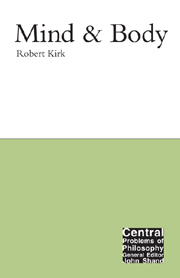4 - Some objections to physicalism
Summary
Thomas Nagel's paper “What Is It Like to Be a Bat?” (1974) shone an uncomfortably bright spotlight on physicalism. Physicalists had failed to engage with the really difficult question: how to explain consciousness. “Without consciousness the mind-body problem would be much less interesting”, he wrote. “With consciousness it seems hopeless.” He suggested that for an organism to have conscious mental states is for there to be something it is like to be it. There is something it is like for me as I look at the bricks in the wall; there is nothing it is like to be a brick. Fundamentally “an organism has conscious mental states if and only if there is something that it is like to be that organism – something it is like for the organism”. This is “the subjective character of experience”, which he maintained “is not captured by any of the familiar, recently devised reductive analyses of the mental, for all of them are logically compatible with its absence” (1974: 166). In this chapter we will start by examining his reasoning, then consider some further objections to physicalism.
Nagel's argument
Nagel chooses the example of bats because although they seem to be subjects of conscious experience they are also alien – especially the ones which perceive by echolocation. Although there is something it is like to be a bat, we have no idea of its character.
- Type
- Chapter
- Information
- Mind and Body , pp. 75 - 98Publisher: Acumen PublishingPrint publication year: 2003



